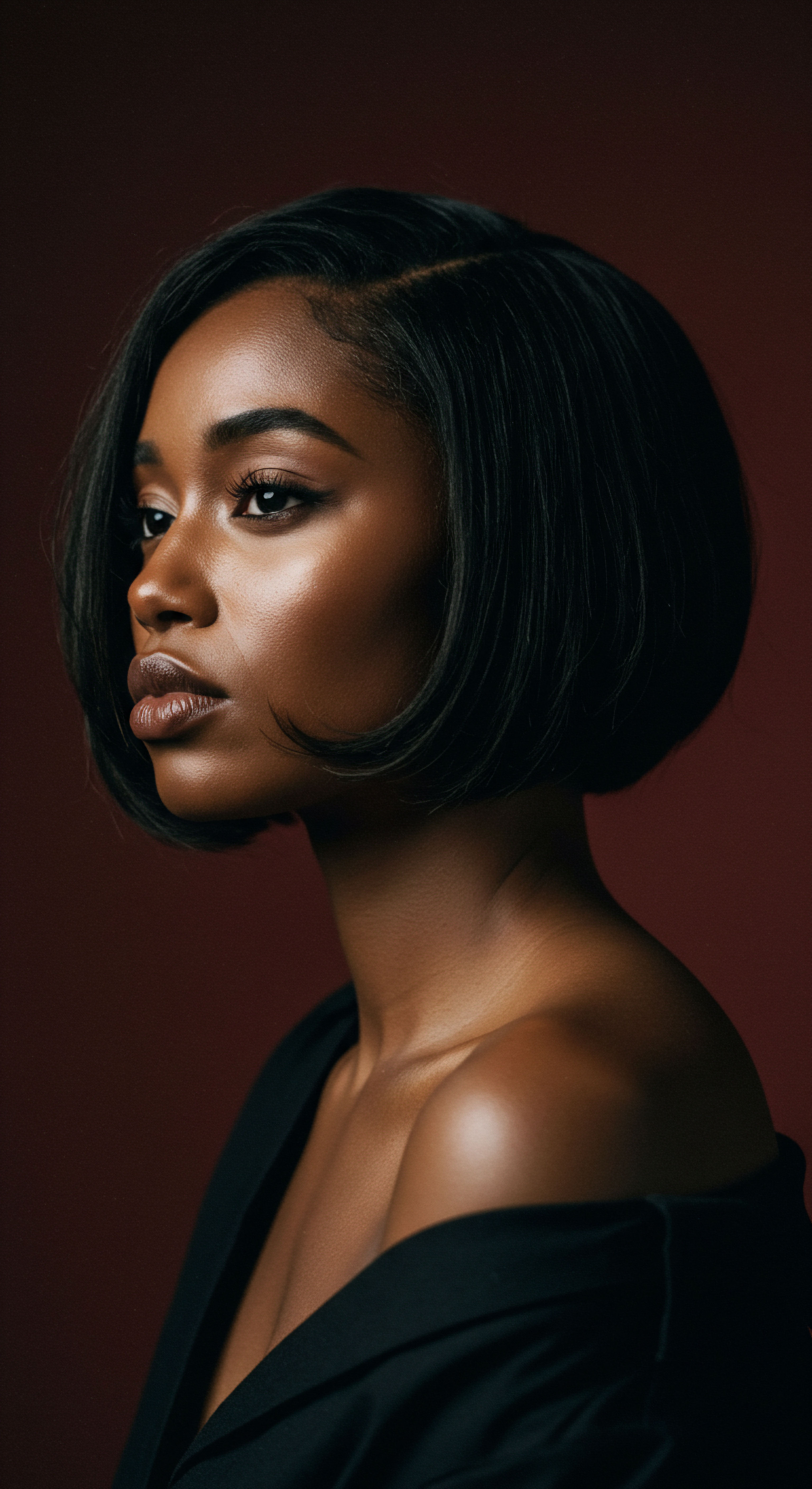
Roots
The dance of textured hair, with its coils and spirals, often comes with a companion ❉ frizz. This phenomenon, so familiar to those of us with curls, can feel like a persistent whisper of defiance from our strands, especially when humidity fills the air. For centuries, across various cultures, people have sought ways to honor and protect their hair, understanding its deep connection to identity and well-being.
The quest for serene, defined curls often leads us to materials that promise gentle care, and among these, silk stands as a time-honored ally. To truly grasp how silk helps calm the spirited nature of frizz, we must first look to the very foundation of our hair, its structure, and the forces that shape its daily expression.
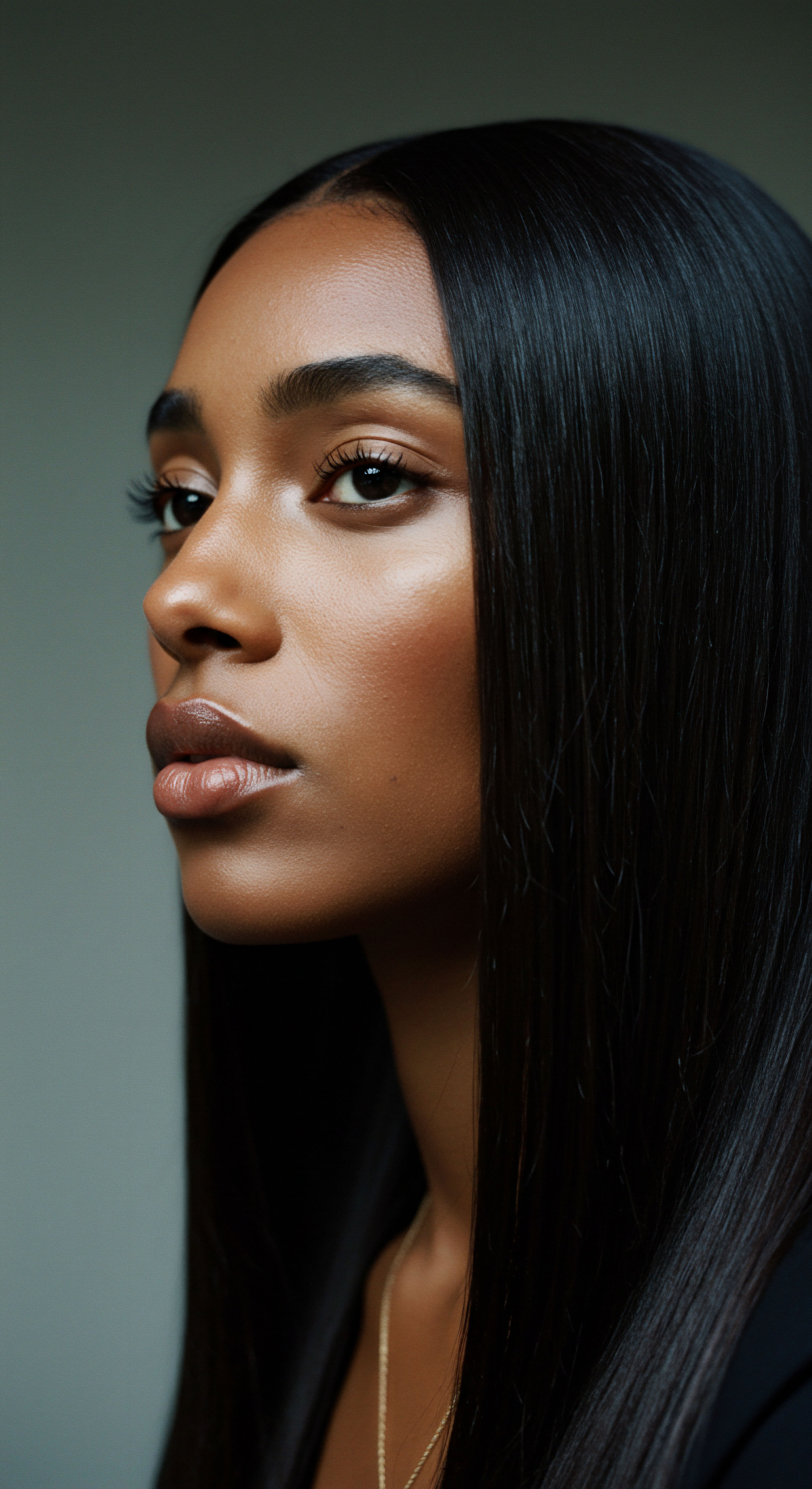
Hair Anatomy and Physiology Specific to Textured Hair
Every strand of hair, whether straight, wavy, or coily, is a marvel of biological architecture. It emerges from a follicle, a tiny pocket in the skin, and extends outward as the hair shaft. This shaft is composed of three main layers ❉ the medulla, the cortex, and the cuticle. The outermost layer, the Cuticle, is particularly significant when considering frizz.
Picture it as a protective shield, made of overlapping, translucent cells that resemble tiny scales on a roof. When these scales lie flat and smooth, hair reflects light, appearing shiny and feeling soft.
For textured hair, the story of the cuticle holds particular weight. The very shape of a curly or coily hair follicle is often elliptical, rather than perfectly round, which influences the hair shaft’s spiral form. This unique structure means that curly hair tends to have “high spots” where the cuticle naturally lifts slightly, making it more susceptible to damage and dehydration.
The twists and turns of curls also make it harder for the scalp’s natural oils, sebum, to travel down and coat each strand evenly, leaving textured hair often drier than its straighter counterparts. This inherent dryness, coupled with the lifted cuticle, creates a predisposition for frizz.
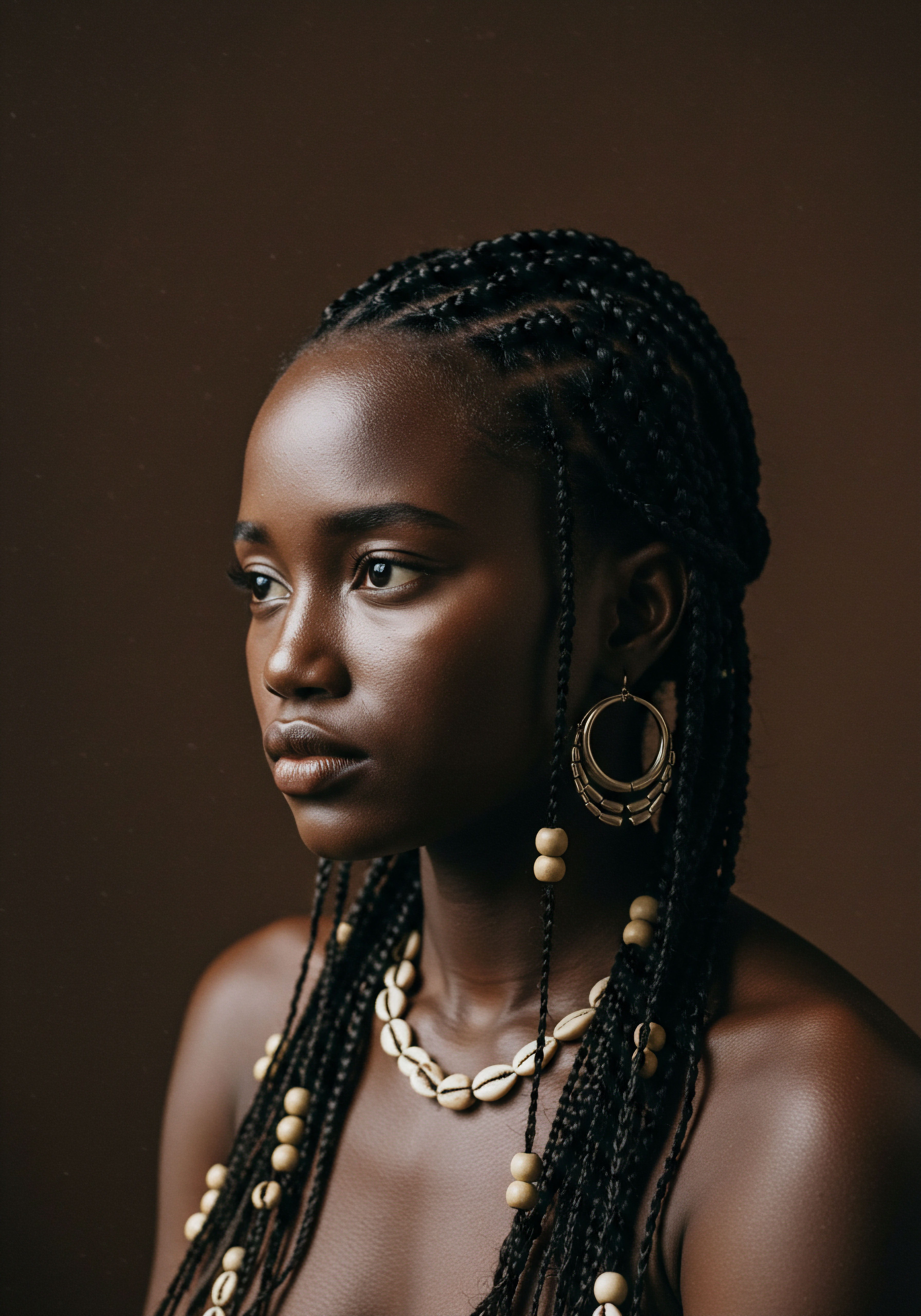
How Does Humidity Affect Hair Structure?
Humidity acts as a significant catalyst for frizz. When the air is damp, water molecules are eager to enter the hair shaft. Hair is hygroscopic, meaning it readily absorbs moisture from its surroundings. For hair with an already lifted cuticle, this absorption is accelerated.
As water molecules penetrate the hair’s cortex, they form temporary Hydrogen Bonds with the keratin proteins within the hair. This binding causes the hair strands to swell, disrupting the smooth alignment of the cuticle scales and causing them to lift further.
The swelling and disruption lead to the characteristic unruly, undefined appearance we associate with frizz. In essence, the hair is reacting to its environment, attempting to find equilibrium with the moisture in the air. For textured hair, where the curl pattern is defined by specific protein bonds, this swelling can distort the natural curl shape, leading to a loss of definition and an increase in volume without control. A study noted that increased water content can lead to greater protein degradation in hair, making it more reactive and susceptible to damage at higher humidity levels.
Hair’s outermost layer, the cuticle, resembles overlapping scales that lift when dry or exposed to humidity, leading to frizz.

The Role of Friction in Hair Health
Beyond environmental humidity, mechanical friction plays a substantial role in promoting frizz and hair damage. Every movement, from sleeping on a pillow to brushing or even simply strands rubbing against each other, generates friction. Rougher fabrics, such as cotton, possess microscopic fibers that can snag and tug at the delicate hair cuticle. This constant pulling and rubbing can lift the cuticle scales, creating a rougher surface that further encourages moisture absorption and tangling.
Over time, this repeated friction can lead to increased breakage, split ends, and a general lack of smoothness, all contributing to a frizzy appearance. The surface lubrication provided by smoother materials, conversely, can significantly reduce this mechanical stress, lowering snagging and tangling during grooming processes. This fundamental understanding of hair’s architecture and its interactions with external forces lays the groundwork for appreciating silk’s gentle influence.

Ritual
With a deeper understanding of hair’s inherent structure and its inclination towards frizz, our attention now turns to the practices that can nurture its natural beauty. Daily and nightly routines, often steeped in personal care and tradition, hold the power to transform the way our curls behave. This section explores how silk, a material revered across civilizations, integrates into these rituals, offering a tangible pathway to smoother, more defined hair. It is here that the gentle wisdom of purposeful care meets the science of fiber, creating a harmonious approach to frizz reduction.

What is Silk and How Does Its Structure Benefit Hair?
Silk, a natural protein fiber, comes primarily from the cocoons of silkworms, particularly the mulberry silkworm, Bombyx mori. It is primarily composed of two proteins ❉ Fibroin, the structural core, and Sericin, a sticky protein that coats the fibroin filaments. This unique protein composition gives silk its remarkable properties.
Unlike fabrics like cotton, which are made from short, coarse fibers, silk threads are long, continuous, and exceptionally smooth. This inherent smoothness is silk’s first gift to frizzy hair. When hair glides over a silk surface, such as a pillowcase or hair wrap, there is significantly less friction compared to rougher materials. This reduced friction helps to keep the hair’s cuticle layers lying flat, preventing the mechanical lifting and roughening that contributes to frizz and breakage.
Beyond its smooth surface, silk possesses properties that influence moisture balance. While cotton is absorbent and can draw moisture and natural oils away from hair, silk is less absorbent. This means that hair retains its natural hydration and any applied products, rather than having them absorbed by the fabric. For curly hair, which often struggles with dryness, this moisture retention is a significant advantage, as well-hydrated hair is less prone to frizz.

How do Silk Proteins Act on Hair?
The proteins within silk, fibroin and sericin, offer specific benefits when incorporated into hair care products. Hydrolyzed silk proteins, which are smaller molecules, can penetrate the hair shaft. These proteins, particularly Sericin, have a high affinity for keratin, the main protein of hair, and can form a protective layer around the strands. This protective coating helps to smooth the hair cuticle and seal it, further reducing frizz and enhancing shine.
Studies have indicated that sericin can improve hair elasticity and repair damaged hair, partly due to its amino acid components which aid in moisture absorption and retention. Hydrolyzed silk protein, with its small molecular weight, can also assist in increasing moisture retention at the hair surface, acting as a conditioning, protective layer. This dual action of external smoothness and internal protein support contributes to silk’s efficacy in managing frizz.
Silk’s smooth surface and protein composition minimize friction and aid moisture retention, directly countering frizz-causing factors.
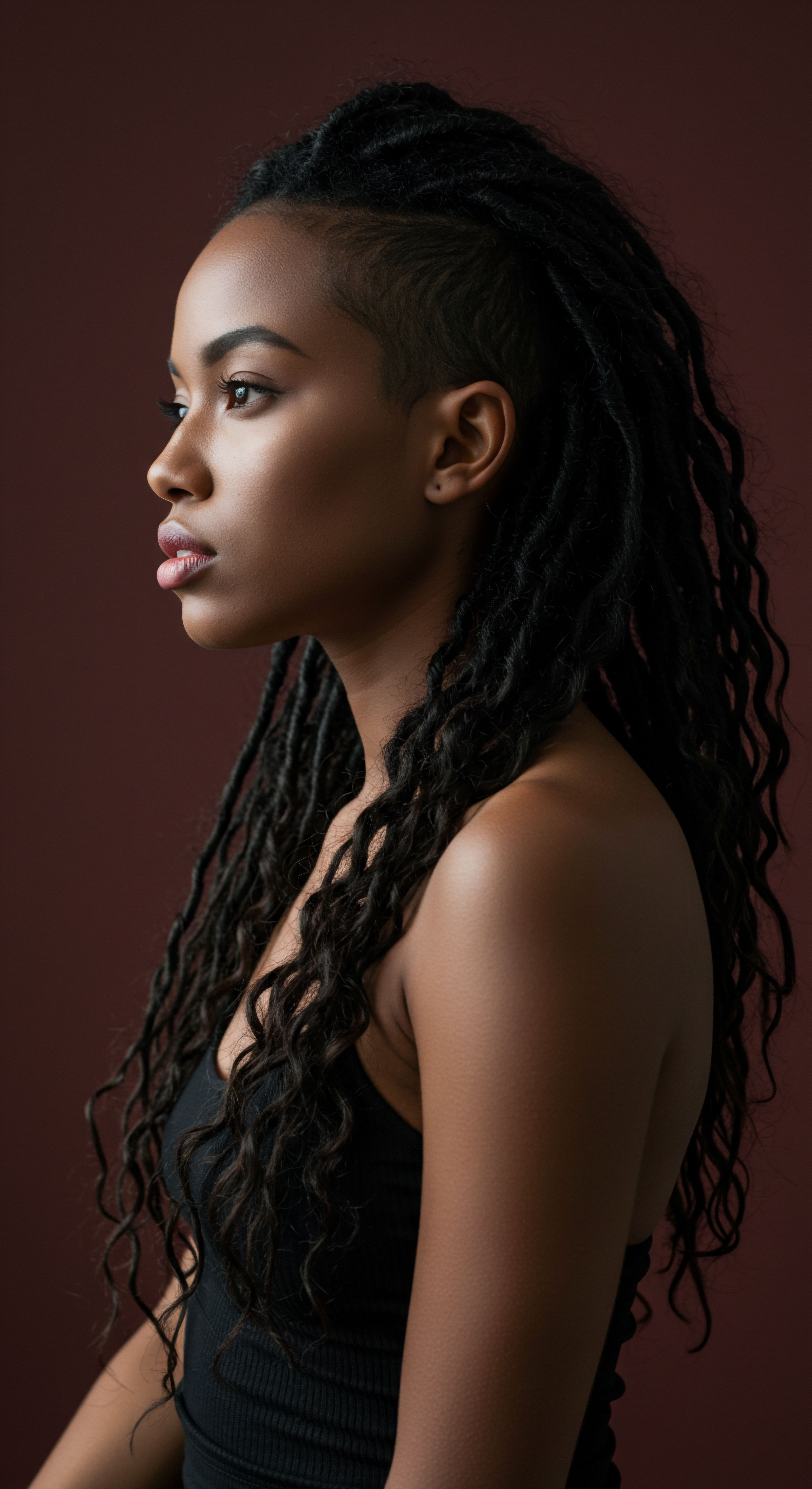
Practical Applications of Silk in Hair Care
Incorporating silk into a hair care regimen can take various forms, each designed to leverage its unique properties for frizz reduction.
- Silk Pillowcases ❉ Perhaps the most widely recognized application, sleeping on a Silk Pillowcase offers a gentle surface for hair throughout the night. As one moves during sleep, hair glides effortlessly across the smooth silk, reducing friction that causes tangles, breakage, and the lifting of cuticles leading to morning frizz. This is particularly beneficial for preserving curl patterns and preventing “bedhead”.
- Silk Hair Wraps and Bonnets ❉ These accessories provide an encompassing shield for hair, especially for those with textured styles. A silk bonnet or wrap secures curls, protecting them from environmental stressors and further minimizing friction against bedding or clothing. They help maintain moisture levels, which is crucial for preventing dryness and subsequent frizz. The use of silk bonnets, in particular, holds significant cultural importance within the Black community, recognized for their role in preserving natural hairstyles and promoting hair health.
- Silk Scrunchies and Hair Ties ❉ Traditional elastic hair ties can snag and pull at hair, causing damage and creasing. Silk scrunchies, with their smooth surface, are far gentler on hair strands, preventing breakage and maintaining the integrity of the curl pattern when hair is tied up.
The deliberate choice of silk in these daily and nightly rituals shifts the interaction between hair and its environment from one of abrasive challenge to one of nurturing protection.
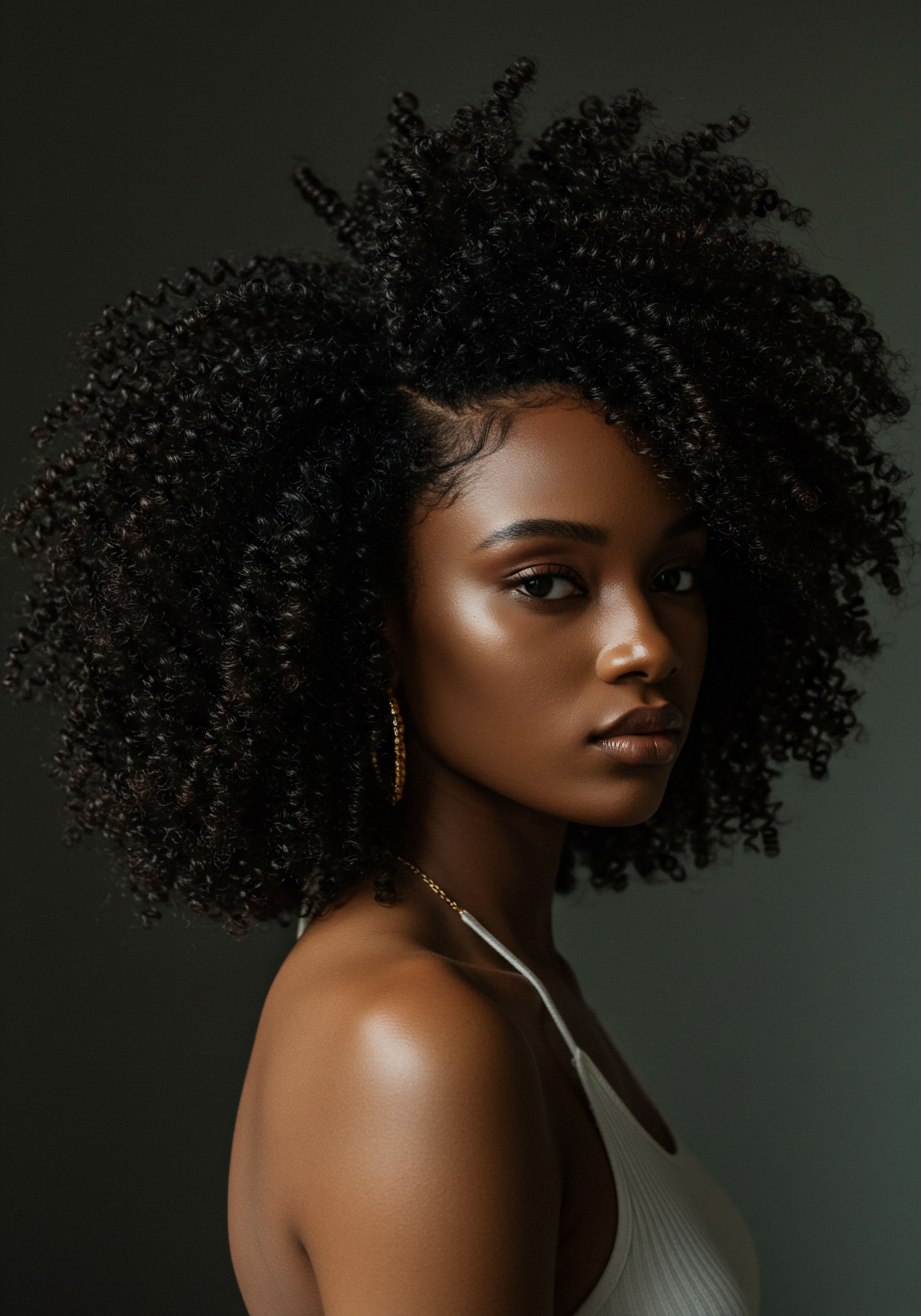
Relay
Moving beyond the foundational understanding and practical applications, we arrive at a deeper exploration of silk’s influence on textured hair. Here, the interplay of science, historical context, and the subtle complexities of hair health come into sharper focus. This section aims to connect the dots, presenting a multi-dimensional view of how silk, in its various forms, contributes to the serene presentation of curls, drawing on specific research and insights that might challenge common perceptions.
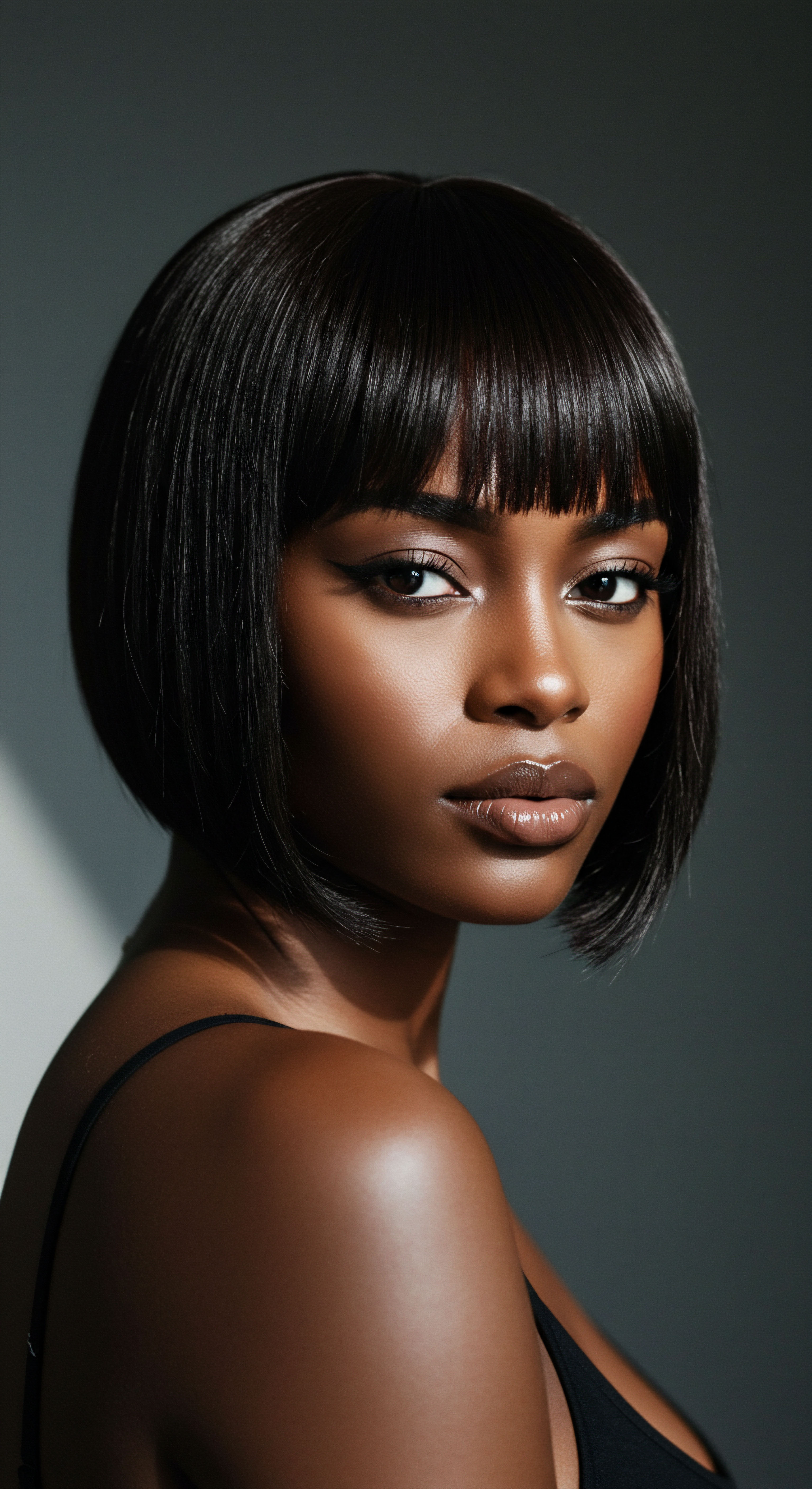
What is the Quantitative Impact of Silk on Hair Friction?
The primary mechanism by which silk reduces frizz lies in its exceptionally low coefficient of friction. While the concept of “smoothness” is often discussed, quantifying this difference offers a more precise understanding. A study published in the Journal of Cosmetic Dermatology indicated that smoother fabrics, such as silk, significantly help prevent hair shaft damage caused by repeated friction.
Specifically, research suggests silk’s smooth surface can reduce hair friction by up to 43% compared to other materials. This reduction in mechanical stress is paramount for textured hair, which is inherently more fragile due to its irregular fiber shape and areas where the cuticle is already predisposed to lift.
Consider the cumulative effect of hundreds of thousands of hair strands rubbing against a pillowcase for approximately eight hours each night. On a rougher surface, this constant mechanical action leads to repeated lifting and abrading of the cuticle scales, akin to repeatedly running a hand against the grain of a shingled roof. This physical disruption compromises the hair’s outer protective layer, making it more vulnerable to moisture fluctuations in the air and leading to increased frizz. The smooth glide of silk, by contrast, minimizes this abrasive interaction, allowing the cuticles to remain flatter and more aligned, thereby preserving the hair’s integrity and natural moisture balance.
| Fabric Type Cotton |
| Hair Friction Level High |
| Impact on Cuticle Causes significant lifting and abrasion |
| Fabric Type Silk |
| Hair Friction Level Low (up to 43% reduction) |
| Impact on Cuticle Minimizes lifting, promotes cuticle alignment |
| Fabric Type Data highlights silk's superior ability to reduce mechanical stress on hair strands. |
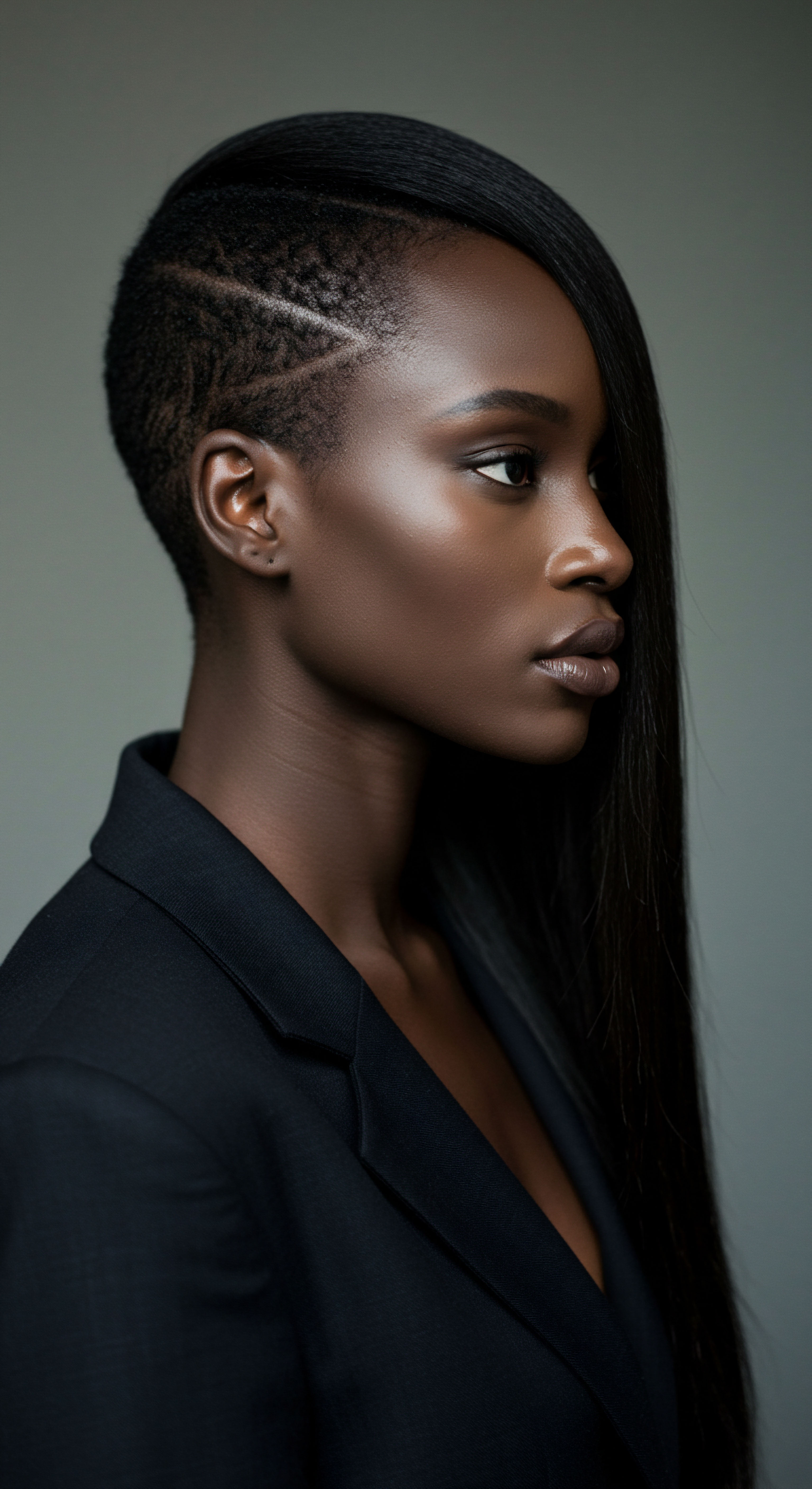
Does Silk Directly Transfer Amino Acids to Hair?
A common assertion in popular discourse is that silk, being a protein, directly transfers beneficial amino acids to hair upon contact, thereby strengthening it. While silk proteins (fibroin and sericin) are indeed composed of amino acids and are incredibly beneficial when formulated into hair care products, the idea of direct transfer from a pillowcase to hair through mere contact is not supported by current scientific understanding. Amino acids do not transfer from silk to the body simply by laying one’s head on a silk pillowcase.
The true benefit from silk proteins comes when they are hydrolyzed and incorporated into topical formulations like shampoos, conditioners, or leave-in treatments. Hydrolysis breaks down the large silk proteins into smaller peptides and amino acids, allowing them to be absorbed by the hair shaft. Once absorbed, these smaller components can indeed contribute to the hair’s internal strength, elasticity, and moisture retention.
For instance, hydrolyzed silk proteins containing cysteine, an amino acid crucial for keratin production, can help reinforce hair. A 2013 study published in Advanced Materials Research showed that sericin can be an effective hair care ingredient, providing outstanding hair care and repair for damaged hair, and its amino acid components offer significant moisture absorption and retention.
Therefore, while the physical properties of silk fabric offer external protection, the deeper, restorative benefits of silk proteins for hair health are realized through cosmetic formulations that allow for molecular interaction. This distinction is important for understanding the comprehensive role of silk in hair care.

Cultural Significance of Hair Wrapping and Silk Use
The practice of wrapping hair for protection and aesthetic purposes is not a modern invention; it possesses a rich, multi-century history across diverse cultures. Silk, with its luxurious feel and practical benefits, has often been the material of choice for these traditions.
From ancient China, where silk originated around 4000 BC, to Japan, India, and various parts of the Middle East and Africa, silk hair wraps have served multiple functions. In China, silk wraps were used to protect hair, maintain elaborate hairstyles, and even signify social status during dynasties like the Tang. Japanese geishas utilized silk to preserve their intricate hairdos overnight and prevent damage. In India, silk scarves shielded hair from dust, sun, and pollution, while also being part of religious and ceremonial attire.
Within the Black community, the silk bonnet has a particularly documented history, evolving from headwraps used for both protection and cultural expression to a symbol of hair care and preservation today. This historical continuity underscores a timeless wisdom ❉ that covering and protecting hair, especially delicate textured hair, with a smooth, non-absorbent material like silk, offers tangible benefits for its health and appearance. The cultural practices align with the scientific understanding of friction reduction and moisture preservation, highlighting a profound, intuitive connection between tradition and well-being.
This historical and cultural context elevates silk from a mere fabric to a symbol of care, resilience, and identity, particularly for those with textured hair who have long understood the importance of protecting their crowns.
- China ❉ Ancient origins, used for protection, styling, and social status.
- Japan ❉ Used in “kazashi” for elaborate hairstyles, especially by geishas.
- India ❉ Scarves protected hair from elements and were part of ceremonial dress.
- Black Community ❉ Bonnets and wraps for natural hair preservation, a symbol of identity.

Reflection
The journey through the intricate world of hair science, the delicate nature of textured strands, and the enduring legacy of silk reveals a profound truth ❉ understanding and gentle care are the cornerstones of vibrant curls. Silk, in its quiet strength and smooth demeanor, offers a simple yet potent answer to the persistent challenge of frizz. It whispers of a harmony between our hair’s natural inclinations and the protective embrace of mindful practices. As we consider the future of hair care, the timeless wisdom of silk reminds us that true radiance often lies not in complex interventions, but in respecting the inherent beauty of our strands, allowing them the space to flourish with grace and definition.

References
- Sleep Foundation. (2023). Benefits of a Silk Pillowcase.
- Gingerlily. (2024). Silk Protein and The Benefits It Has On Hair.
- Blissy. (2022). How the Silk Protein Sericin Helps Hair and Skin.
- Esme Luxury. (2024). How Natural Amino Acids in Silk Help Your Hair?
- The Chic Icon. (2024). Secret Benefits of Silk for Hair and Skin.
- Esme Luxury. (2024). Silk Hair Wraps in Different Cultures ❉ A Global Perspective.
- Lab Muffin Beauty Science. (2020). Silk for Skincare and Haircare.
- Prose. Silk Proteins – Best Ingredients for Hair.
- CORE. Photodegradation of Hair Proteins ❉ Mechanistic Insights and the Role of Transition Metals.
- Silk Vs. Cotton. Which is better for my hair? (2023).
- Strands of Silk. (2020). The rich history of silk and hair wrapping.
- Campus.edu. (2024). What is a Hair Cuticle?
- Emily’s Pillow. (2024). What is the difference between silk pillowcase and cotton pillowcase?
- The Clifford Clinic. (2024). Unraveling The Myth ❉ Can Silk Pillows Prevent Hair Loss?
- Blissy. (2023). How the Silk Protein Sericin Helps Hair and Skin Guide 101.
- Anna Mitchell Trichology Clinic. (2024). Hair Structure.
- Redken. Science of Curly Hair.
- ARKIVE© Headcare. (2024). Taming the Frizz ❉ Your Ultimate Guide to Smooth, Shiny Hair.
- Halo Haircare Society. (2024). So you think your hair is sensitive to protein?
- Italic. (2025). Silk Pillowcase vs Sateen ❉ Which is Best for Your Beauty Sleep?
- HairPalace Hair Transplant Clinic Hungary. (2024). Hair Structure Explained.
- Dariia Day. (2025). Silk vs. Cotton & Satin ❉ What’s the Best Fabric for Your Skin, Hair & Sleep?
- Clinikally. (2024). How Mulberry Silk Transforms Your Skin and Hair.
- Mulberry Park Silks. (2024). The Cuticle Cure ❉ How to Fight Frizz and Keep Your Hair Healthy.
- Silk Addict. (2025). Discover how silk pillowcases transform your sleep, skin, and hair.
- colleen. (2022). SILK PROTEINS – CAN THEY MAKE HAIR DREAMS COME TRUE?
- SILKE Hair Products. Why SILKE Hair Products Work.
- Silk Works. (2024). Discover how silk pillowcases transform your sleep, skin, and hair.
- Silkbiotic. (2024). The Scientifically Proven Benefits of Silk for Skin and Hair.
- White Rose Research Online. UV Humidity Manuscript v3 – figures corrected.
- Cosmetics & Toiletries. (2015). Defining and Controlling Frizz.
- Healthline. (2019). Silk or Copper Pillowcase ❉ 7 Benefits for Hair, Skin, and Sleep.
- Controlled Chaos. (2023). Best Anti frizz Cream for Curly Hair by Controlled Chaos.
- Serione. (2024). Silk Proteins Showdown ❉ Fibroin vs Sericin – Which Reigns Supreme in Hair Care?
- scooms. (2024). Are silk pillowcases good for hair?
- ResearchGate. Effect of humidity on photoinduced radicals in human hair.
- The silk bonnet has a rich history. (2024).
- Nordstrom. (2023). 5 Benefits of Silk Pillowcases for Your Skin & Hair.
- ResearchGate. (PDF) Potential of silk proteins in cosmetics.
- Smithsonian Magazine. (2013). Why Humidity Makes Your Hair Curl.
- Blissy. (2025). Is Silk or Satin Better for Hair? TikTok’s Viral Hack vs. Science.
- MDPI. Performance and Mechanism of Hydrolyzed Keratin for Hair Photoaging Prevention.
- Kao Americas. (2023). Mechanism of Hair Frizz on the Outer Layer of the Head Revealed ❉ UV Protection Found to be Effective for Prevention of Frizz.
- ResearchGate. (2023). Full article ❉ Insights on the Hair Keratin Structure Under Different Drying Conditions.
- PMC. Hair Cosmetics ❉ An Overview.
- Mayfairsilk. (2022). The History of Silk ❉ The Story of the Luxurious Fabric.
- Vinpearl. Vietnamese silk ❉ A story of tradition, culture, and artistry.